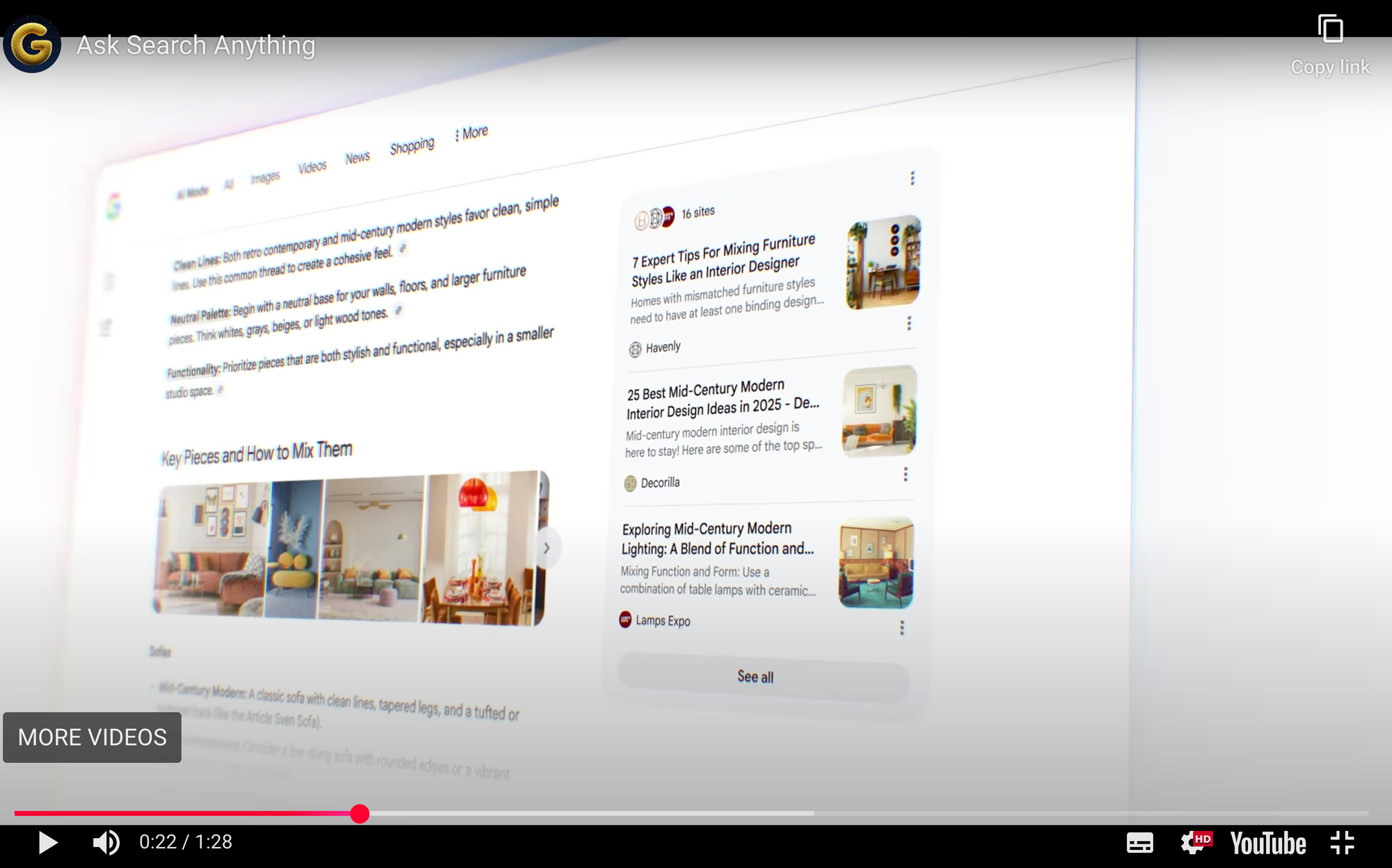Google's New AI Search: What It Means for Content Creators

The search landscape just shifted dramatically. Here's how to adapt your content strategy for the AI-first future. Google's latest announcement at I/O 2025 isn't just another feature update—it's a fundamental reimagining of how search works. With AI Overviews driving over 10% increase in usage and the rollout of AI Mode, we're witnessing the biggest transformation in search since Google's inception. For content creators, this isn't just news—it's a wake-up call.
The New Search Reality: From Keywords to Intelligence
Traditional SEO focused on matching keywords to user queries. Google's new AI search goes far beyond that, moving "from information to intelligence." Here's what's changing:
AI Mode: The End-to-End AI Experience
Google's most powerful AI search uses "query fan-out technique," breaking down complex questions into subtopics and issuing multiple queries simultaneously. This means your content needs to be comprehensive enough to satisfy not just the main query, but all the related subtopics AI might explore.What this means for you: Surface-level content won't cut it anymore. AI Mode digs deeper into the web to find "hyper-relevant content." Your articles need depth, authority, and comprehensive coverage of topics.
Deep Search: Research at Scale
Deep Search can issue hundreds of searches and create expert-level, fully-cited reports in minutes. It's essentially competing with the research process that many content creators rely on.The opportunity: While AI can compile information quickly, it still needs quality sources to pull from. Position your content as the authoritative source AI systems will reference.
Six Critical Changes Content Creators Must Address
1. Multimodal Content is No Longer Optional
With over 1.5 billion people using Google Lens monthly and new Live capabilities allowing real-time camera-based searches, visual content integration is essential.Action item: Every piece of content should include relevant visuals, infographics, or video elements that can be discovered through visual search.
2. Conversational and Complex Queries are Rising
Google reports people are asking "more complex, longer and multimodal questions." The days of optimizing for short-tail keywords are ending.Strategy shift: Create content that answers the questions people actually ask, not just the keywords they type. Think FAQ-style, conversational content that addresses complex, multi-part queries.
3. Personal Context Changes Everything
AI Mode will offer personalized suggestions based on past searches and connected Google apps. This means the same query might yield different results for different users.Implication: Generic, one-size-fits-all content becomes less valuable. Create content that can be relevant across different user contexts and personalization scenarios.
4. Agentic Capabilities Mean Action-Oriented Content Wins
Google's agentic features help users complete tasks like booking tickets or making reservations. Content that helps users take action will be prioritized.Content strategy: Move beyond informational content. Create guides, tutorials, and resources that help users accomplish specific goals.
5. Data Visualization Becomes Competitive Advantage
AI Mode can create custom charts and graphs from complex datasets. If your content includes data analysis, you're competing with AI's ability to visualize information instantly.Response: Focus on unique data insights, proprietary research, and expert interpretation that AI can't replicate.
6. Speed and Accuracy are Table Stakes
Google emphasizes that AI Overviews delivers "the fastest AI responses in the industry." Slow-loading, inaccurate content will be filtered out quickly.Technical requirement: Ensure your content loads fast, is factually accurate, and provides immediate value.
The Content Creator's Survival Guide
Become the Source, Not the Aggregator
AI excels at aggregating information. Your value lies in being the original, authoritative source that AI systems reference. Focus on:
- Original research and data
- Expert insights and analysis
- Unique perspectives and experiences
- First-hand case studies and examples
Optimize for AI Understanding
Structure your content so AI can easily parse and understand it:
- Use clear headings and subheadings
- Include structured data markup
- Create comprehensive topic clusters
- Ensure internal linking between related concepts
Embrace the Long-Form Revolution
With AI handling quick answers, your content needs to provide depth that justifies the click-through. Create comprehensive resources that serve as definitive guides on your topics.
Build for Multiple Search Intents
Since AI Mode uses query fan-out, your content should address multiple related search intents within a single piece. Think of it as creating content that satisfies the main question plus all the follow-up questions users might have.
The Opportunity Hidden in the Challenge
While these changes might seem overwhelming, they present a massive opportunity for content creators who adapt quickly. As AI handles basic information retrieval, there's increased demand for:
- Expert analysis and interpretation
- Creative and original thinking
- Personal experiences and stories
- Practical, actionable guidance
- Community and human connection
The content creators who thrive will be those who position themselves as the trusted sources that AI systems reference, not those trying to compete with AI's information processing capabilities.
What's Next?
Google's AI Mode is rolling out in the U.S. now, with additional features coming to Labs users in the coming months. This isn't a distant future scenario—it's happening now.The question isn't whether AI will change search (it already has), but whether you'll adapt your content strategy to thrive in this new landscape. The creators who start optimizing for AI search today will have a significant advantage over those who wait.Your move: Audit your existing content against these new realities. Which pieces need updating? What gaps exist in your coverage? How can you become the authoritative source that AI systems will reference?The future of search is here. Make sure your content is ready for it.
